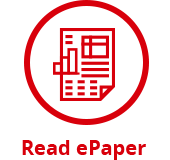Food Packaging regulation in North America
In the USA, food additives are regulated by the Food and Drug Administration (FDA). The approval-mechanisms are quite different to the European legislation. Learn how the FDA differentiates between direct and indirect food additives.
In Canada on the other hand The Canadian Food Inspection Agency (CFIA) and the Health Products and Food Branch (HPFB) of Health Canada are both responsible for food packaging issues.
USA
The Food and Drug Administration (FDA) is the authority in the United States that regulates food additives. Direct food additives are approved by the FDA for a direct addition to food in order to perform a specific function whereas indirect food additives are not approved for this purpose. The FDA does not approve specific products, such as printing inks for direct or indirect food contact. Their sole concern is about materials that may become, either by default or design, food additives.
Printing inks or coatings which are used for direct food contact applications are potential indirect food additives and must therefore comply with the requirements of the indirect food additive guidelines. These are regulated in the Code of Federal Regulations (CFR) under Title 21, Part 170-190. As only a few colorants are listed in these guidelines, only very few printing inks would be acceptable as indirect food additives or even suitable for direct food contact applications.
The FDA does not have specific guidelines for printing inks or coatings for non-direct food contact applications. The FDA is solely concerned that a sufficient barrier for migrants is in place and that no component of the ink or coating materials will become a food additive. The functional barrier as defined by the FDA could be a protective film, a resinous coating or a transparent covering which separates the printed matter from the food. The converter is responsible to ensure that the barrier is sufficient to prohibit migration. In this case there is no legal requirement to comply with the demands of the corresponding indirect food additive sections of 21 CFR.
However, if a substance becomes an indirect food additive by migration or set-off, then the indirect food additive guidelines (21 CFR 170-190) must be complied with. Exemptions are substances classified as GRAS (Generally Recognized As Safe) or Prior-Sanctioned or a corresponding Threshold of Regulation is applicable. Additionally, for several years, individual manufacturers of substances intended for food contact material have been able to obtain evaluation and approval of their commercial product for a defined use via a Food Contact Notification (FCN) process whose data requirements regarding chemical composition, toxicology, migration data and consumer exposure is very demanding.
Furthermore it has to be pointed out, that unlike food additive regulations, a FCN is proprietary and may be relied upon only by the submitter, or notifier, and its customers. Migration calculation or testing might be needed to support the claim of no migration.
Canada
The Canadian Food Inspection Agency (CFIA) and the Health Products and Food Branch (HPFB) of Health Canada are both responsible for food packaging issues. Health Canada sets standards and evaluates food packaging against these standards. Packaging requirements at federally regulated packaging facilities are enforced by the CFIA.
As a best practice, Health Canada recommends that food-packaging companies obtain a Letter of No Objection from the Health Protection Branch for any packaging that may come into contact with food. (It is important to note that a Letter of No Objection does not absolve the packer from liability, should there be a failure in package design leading to the contamination of the food product.) To obtain a Letter of No Objection, detailed information about the printing and packaging processes is required, along with representative extraction test data, where possible.
If the food package has a functional barrier between the food and the printed ink film or, if the ink is completely dry and there is no ink set-off during stacking/nesting of the packages, then the package is considered to have "no direct food contact" with the ink film and a Letter of No Objection is not required.
More information can be found in the Canadian Food Inspection Agencies Guidelines for Submissions, Reference Listing of Accepted Construction Materials, Packaging Materials and Non-Food Chemical Products.

